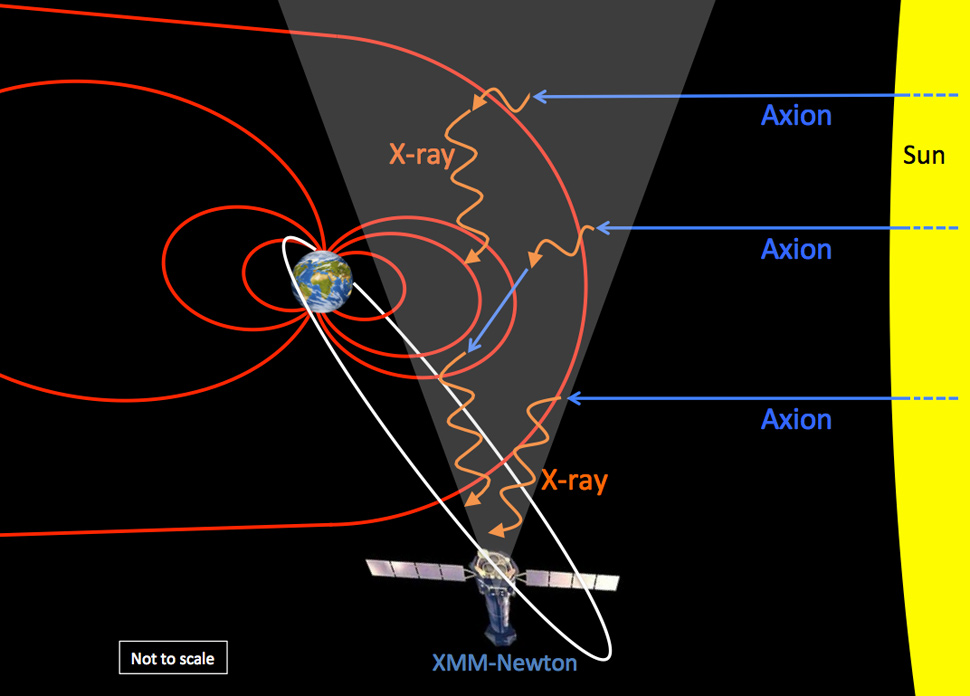Dark energy is one of the most enigmatic forces in physics, believed to be driving the universe’s accelerating expansion. Recent research from the international Dark Energy Spectroscopic Instrument (DESI) collaboration has sparked exciting discussions around the nature of this elusive entity, which may act as a so-called cosmological constant. This groundbreaking study delves into the universe’s past, examining the distribution of matter over the last 11 billion years and its correlation with dark energy’s influence. As scientists utilize the largest 3D map of the cosmos ever created, they uncover vital insights into baryon acoustic oscillations that may shape our understanding of galaxy evolution. With significant input from astronomers at the Center for Astrophysics | Harvard & Smithsonian, these findings may prompt a reevaluation of our models governing universe expansion, suggesting that dark energy’s role may be more dynamic than previously anticipated.
In the quest to comprehend the dynamics of our universe, scholars are investigating forces akin to dark energy, often referred to in broader terms as cosmic acceleration phenomena. This research not only focuses on the factors contributing to the universe’s growth but also on the intricate interplay between matter and energy that governs galaxy formation. The DESI collaboration is instrumental in studying these cosmic developments by analyzing the universe’s vast structure through advanced 3D mapping techniques. By exploring the subtle signatures left by early cosmic events, scientists aim to clarify how such forces influence the evolution of galaxies over time. This effort highlights the importance of multidisciplinary approaches, combining observational data with theoretical frameworks to unravel the complexities of our cosmic environment.
Unveiling Dark Energy’s Role in Universal Expansion
Dark energy plays a pivotal role in the accelerated expansion of the universe, acting as a counterbalance to the gravitational forces of matter. Recent findings from the Dark Energy Spectroscopic Instrument (DESI) collaboration have suggested that this mysterious force, once presumed to be constant, may actually be fluctuating over time. Understanding dark energy is vital as it not only influences the expansion rate but also dictates the overall fate of the universe, causing astronomers to question existing models of cosmological constants.
As DESI continues its groundbreaking work, it provides the largest 3D map of the universe, capturing the distribution of over 14 million galaxies and quasars. By examining patterns in galaxy clustering, scientists can track changes in dark energy’s influence over an astonishing 11 billion years. This research is crucial for analyzing how the universe evolves and enriches our understanding of physical laws governing cosmic expansion. The implications of these findings could lead to new theories in astrophysics and may challenge our grasp on fundamental cosmological principles.
The Essential Contribution of DESI Collaboration
The DESI collaboration epitomizes the synergy of teamwork in astrophysical research, mobilizing over 900 scientists from more than 70 institutions globally. Centered at the U.S. Department of Energy’s Lawrence Berkeley National Laboratory, DESI epitomizes how a unified effort can produce groundbreaking results in the field of cosmology. Researchers, including Harvard astronomers like Daniel Eisenstein and Cristhian Garcia Quintero, have played vital roles in constructing sophisticated algorithms that synthesize colossal datasets, allowing for precise measurements critical to understanding dark energy’s role in cosmic expansion.
The collaboration has potentially transformed how we view galaxy evolution and cosmological constants by mapping the universe’s structure in unprecedented detail. This encompasses studying phenomena such as baryon acoustic oscillations—oscillations that leave discernible patterns in the distribution of matter, acting as pivotal indicators of cosmic expansion at different epochs. These advances assert that a continuous inquiry into dark energy and the structure of the universe is essential for unraveling its mysteries and addressing profound questions about its future.
Baryon Acoustic Oscillations: The Cosmic Ruler
Baryon Acoustic Oscillations (BAO) serve as a fundamental conceptual tool in cosmology, offering insights into the universe’s expansion history. As sound waves propagated through the early universe, they created a ripple effect in the distribution of baryonic matter, akin to the sound of a plucked guitar string. By observing these oscillation patterns within galaxy distributions, astronomers use them as a “cosmic ruler” to measure distances across the universe, gaining invaluable data on the influence of dark energy over time.
The DESI collaboration leverages data from these acoustic oscillations, combining it with up-to-date observations to evaluate dark energy’s varying strength throughout history. This connection between BAO and dark energy not only aids in refining models of cosmic expansion but also enhances our understanding of how gravitational effects interact with dark energy dynamics. As DESI continues to provide data, these oscillation patterns will yield crucial information on the evolution of galaxies and the universal framework.
The Future of the Universe: Dark Energy’s Evolving Influence
The fate of the universe is inextricably linked to the balance of dark energy and matter. The revisions suggested by the latest findings from the DESI collaboration propose that dark energy may not remain constant as previously believed, but rather may be evolving. This change dramatically affects predictions for the universe’s ultimate fate, leading scientists to reconsider long-held assumptions about cosmic destiny.
With the ongoing collection of DESI data, researchers are poised to continue the exploration of how dark energy evolves, guiding future cosmological models. The observations guarantee that as we deepen our understanding of dark energy, new phenomena may emerge, shedding light on previously unexplained galactic evolution patterns. Such insights are instrumental in piecing together the larger story of our universe and predicting how it may eventually transform.
Data Release 1: A Gateway to Cosmic Research
The recent announcement of Data Release 1 from the DESI collaboration marks a monumental milestone in astronomical research. This extensive dataset, comprising detailed information on millions of celestial objects, serves as a public resource for scientists, enabling a broad spectrum of studies in cosmology and astrophysics. With this release, researchers across various fields can delve into the data, exploring questions about the universe’s composition, structure, and expansion.
As the DESI survey continues, each clear night provides astronomers with new perspectives on cosmic phenomena. This open-access initiative not only supports ongoing investigations into dark energy’s effects but also enhances studies surrounding galaxy evolution and the intricate web of the cosmos. By disseminating this wealth of information, DESI reinforces collaborative efforts in deep-space research, fueling innovation and discovery in our understanding of the universe.
Understanding the Cosmological Constant
The concept of the cosmological constant has long been a foundational pillar in the understanding of dark energy. Initially proposed by Albert Einstein, it is synonymous with the energy density of empty space and serves as a critical factor in the equations that describe how the universe expands. Recent results from the DESI collaboration have stirred discussions suggesting that the cosmological constant may not be as immutable as once thought, hinting at dynamics that could evolve over cosmic timescales.
As researchers analyze data from DESI, they are uncovering new insights into how the cosmological constant interacts with matter and energy in the universe. With this examination of its possible variability, the field stands at the brink of redefining what we know about dark energy and its implications for the future of cosmic expansion. Such revelations could force a reevaluation of fundamental physics and lead to a deeper understanding of the universe’s acceleration.
Galaxy Evolution and Dark Energy Correlation
The study of galaxy evolution intricately intertwines with the dynamics of dark energy. As the universe expands, dark energy influences the formation and behavior of galaxies, dictating their evolution over billions of years. Findings from the DESI collaboration not only underscore the significant role of dark energy in this process but also reveal unprecedented insights into how galaxies grow and interact within the cosmic web.
By examining the massive dataset compiled through DESI, astronomers can trace galactic evolution across different eras of cosmic history. These studies provide a clearer picture of how dark energy modulates the growth of galaxies, informing our understanding of large-scale structure formation in the universe. With ongoing advancements, researchers aim to discern the implications of this relationship for future explorations into the universe’s expansion and overall makeup.
Expanding Our Knowledge of the Cosmic Web
The cosmic web is a complex structure of galaxy filaments, clusters, and voids that depicts the universe’s large-scale organization. The influence of dark energy is crucial in shaping this web, as it affects how matter is distributed across vast distances. The insights garnered from the DESI collaboration promise to enhance our understanding of the cosmic web, revealing how dark energy’s role is vital in this intricate network.
By utilizing the expansive 3D maps created by DESI, researchers are capable of identifying subtle variations in the cosmic web’s structure, further elucidating the role of dark energy in the universe’s evolution. This research is paramount, as it not only informs us about the current dynamics but also offers predictions concerning future developments in the cosmological landscape. Understanding the interplay between dark energy and the cosmic web is a key step towards unraveling the mysteries of our universe.
Global Collaborations: Strengthening Astrophysics Research
International collaborations, exemplified by DESI, represent the forefront of astronomical research today. By uniting experts from various fields and institutions worldwide, these joint efforts generate a level of synergy that fosters innovative advancements in understanding dark energy and cosmic expansion. The productivity of such collaborations amplifies their impact, producing results that can redefine existing theories in astrophysics.
The DESI project, which has integrated over 900 scientists, showcases how collective expertise can lead to groundbreaking discoveries. Each contribution, whether through data analysis, simulation development, or public outreach, plays a significant role in advancing our knowledge of the universe. These collaborations not only strengthen the scientific community but also inspire the next generation of researchers to engage in the mysteries of the cosmos.
Frequently Asked Questions
What is dark energy and how does it relate to the universe’s expansion?
Dark energy is a mysterious force that makes up about 68% of the universe and is believed to drive its accelerating expansion. It counteracts the force of gravity, causing galaxies to move away from each other at increasing speeds. Understanding dark energy is crucial for explaining the fate of the universe.
How is the DESI collaboration contributing to our understanding of dark energy?
The Dark Energy Spectroscopic Instrument (DESI) collaboration is mapping the universe to better understand dark energy. By analyzing data from over 14 million galaxies and quasars, DESI aims to elucidate dark energy’s role in cosmic expansion and its potential evolution over time.
What role does the cosmological constant play in our understanding of dark energy?
The cosmological constant is a theoretical value that represents dark energy’s density and pressure. It’s a key component in Einstein’s theory of general relativity and helps explain the observed acceleration in the universe’s expansion, although recent DESI findings suggest it may be evolving.
What are baryon acoustic oscillations and how do they relate to dark energy research?
Baryon acoustic oscillations (BAOs) are regular, periodic fluctuations in the density of visible matter in the universe. They serve as a cosmic ruler in dark energy research, allowing scientists to measure the expansion of the universe over time and gain insights into dark energy’s influence.
How do DESI findings impact our understanding of galaxy evolution in relation to dark energy?
The DESI collaboration’s findings are vital for understanding galaxy evolution as they track the influence of dark energy on galaxy formation and distribution. By analyzing the large-scale structure of the universe, researchers can better comprehend how dark energy shapes the cosmos and influences the life cycle of galaxies.
| Key Aspect | Details |
|---|---|
| Collaboration | Dark Energy Spectroscopic Instrument (DESI) includes researchers from Harvard and over 70 institutions globally. |
| Main Finding | Research suggests that dark energy, thought to be a constant force, may be decreasing over time, challenging current cosmological models. |
| Impact of Findings | Indicates the need for a potential update to the standard model of the universe and its expansion. The balance between dark energy and matter is crucial for the universe’s fate. |
| Research Methodology | Utilized the largest 3D map of the universe created to track dark energy’s influence over the past 11 billion years, examining the distribution of matter. |
| Baryon Acoustic Oscillations | A feature used to gauge dark energy’s strength throughout history by measuring the distribution patterns in galaxies and quasars. |
| Team Contributions | Key roles played by Professor Daniel Eisenstein, Cristhian Garcia Quintero, Michael Rashkovetskyi, and Claire Lamman in analysis and public outreach. |
| Future Prospects | Ongoing DESI survey will enhance our understanding of galaxy evolution, the cosmic web, and the structure of the Milky Way. |
Summary
Dark energy plays a pivotal role in our understanding of the universe’s expansion. Recent analysis from the DESI collaboration highlights that this mysterious force, once considered constant, might be evolving, potentially reshaping our theories surrounding the universe. As scientists delve deeper into the implications of these findings, the quest for a more accurate model of cosmic expansion continues, marking an exciting era in cosmological research.








